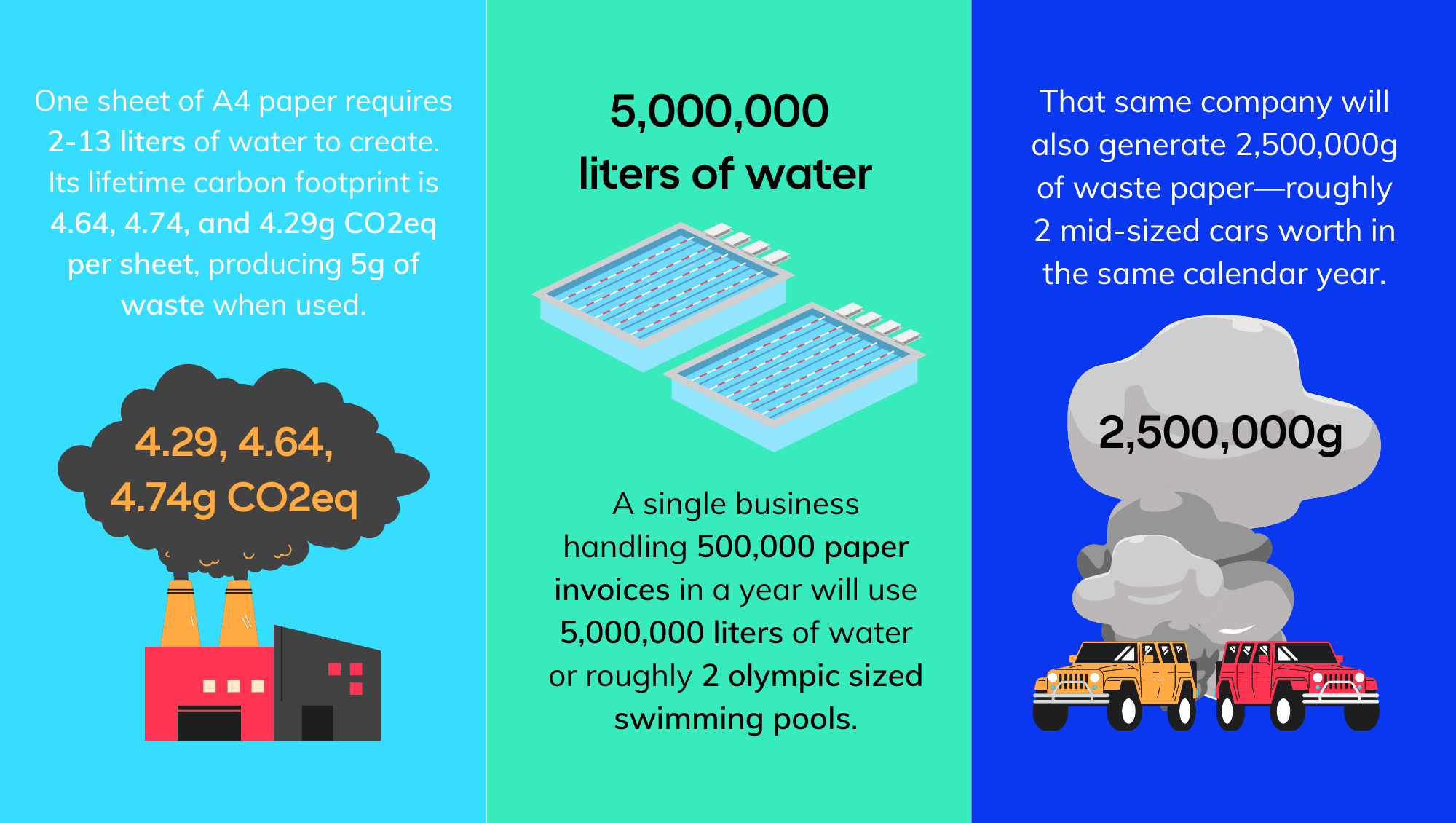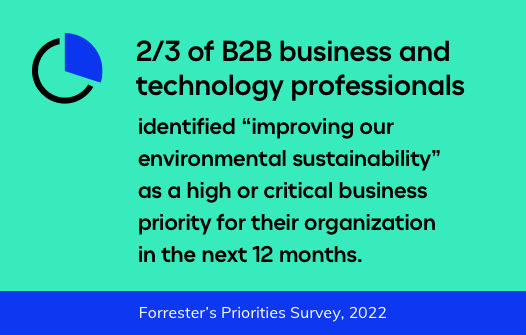Let’s build a more sustainable supply chain
Tradeshift helps enterprises reduce their carbon footprint by eliminating paper, increasing payment automation, and building more transparency and resilience into supply chains.
Eliminating paper from your supply chain is a big step towards achieving your ESG goals
Switching from paper to e-invoicing not only saves you time and money, it also
reduces your carbon footprint dramatically.

1 A university of Delft (Netherlands) and UNESCO study – https://waterfootprint.org/media/downloads/Report46-WaterFootprintPaper_1.pdf
2 according to, respectively, the ISO 14040/14044 standards, the PAS 2050 and the CEPI framework – https://www.researchgate.net/publication/235712203_Comparison_of_methodologies_for_estimating_the_carbon_footprint_-_case_study_of_office_paper
3 https://www.papersizes.org/weight-of-sheets.htm
Transparency
Transparency refers to knowledge about participants in your supply chain and their active role in the value chain. A basic start is knowing the metadata of the vendors you do business with, and another element of transparency is knowing what type of impact they have. Providing finance and early payments to suppliers requires in-depth knowledge of sellers—hence the need for transparency.


Footprint
Supply chain footprint refers to the environmental footprint that an enterprise leaves behind. A typical one is greenhouse gas emissions, others include environmental hazards like deforestation. Within ESG reporting (environmental, social, and governance) this metric delivers information on the “E” or “environmental” part of the larger ESG metric.
Scope 3 emissions can be calculated based on the invoices and purchase orders from any given commerce relationship. Choose to set up invoices, to hold emission statements, to create visibility on how the environmental impacts in your supply chain act out per supplier, and per invoice. This type of data can pave the way for access to green financing.
Integrity
Supply chain integrity is all about getting insights into your suppliers behavior—primarily forced, or child labor. It is an essential part of the “S” and “G” in the ESG metric, delivering information on company social and governance performance. As a more soft metric and one that it is often hidden from buyers, it can be hard to measure directly. However, via the Tradeshift platform, we are able to provide your company with guidance on where and when to deploy extra caution and due diligence.


Traceability
Covers the ability to display data for tracing and tracking of products both upstream towards the manufacturer, and downstream towards the end-user. Traceability data is a core prerequisite when delivering information on product provenance or authenticity—the ability to trace products backwards from consumer to producer, and to tap into recorded transparency data and event data when necessary, is key when delivering insights for proving that the product is safe.
It’s never been more critical—or achievable—to build sustainable supply chains
ESG and CSR goals have moved front and center on corporate agendas as the effects of climate change become more apparent. But building sustainability into supply chains isn’t just about doing what’s right for the environment, it’s also smart business: According to Forrester’s Priorities Survey, 2022, two-thirds of B2B business and technology professionals identified “improving our environmental sustainability” as a high or critical business priority for their organization in the next 12 months.” And why shouldn’t they? Sustainable practices reduce costs and resources and increase the efficiency of buildings, vehicles and machinery.

ESG/CSR goals + Digital transformation — match made for a more sustainable future

As investors and stakeholders put more and more pressure on enterprises to create more sustainable strategies for the future, digital transformation projects are moving up in prioritization because of the impact they can have on ESG/CSR goals. Perhaps the most obvious impact digital transformation projects have on ESG/CSR goals is in data: platforms like Tradeshift improve data collection reporting and analysis making it easier to identify problematic spots in your supply chain and pivot quickly to new vendors more aligned with your ESG/CSR aims. When you layer AI, compliance capabilities, and powerful collaboration tools on top of it all, you start to see how digitization can impact every aspect of your business.